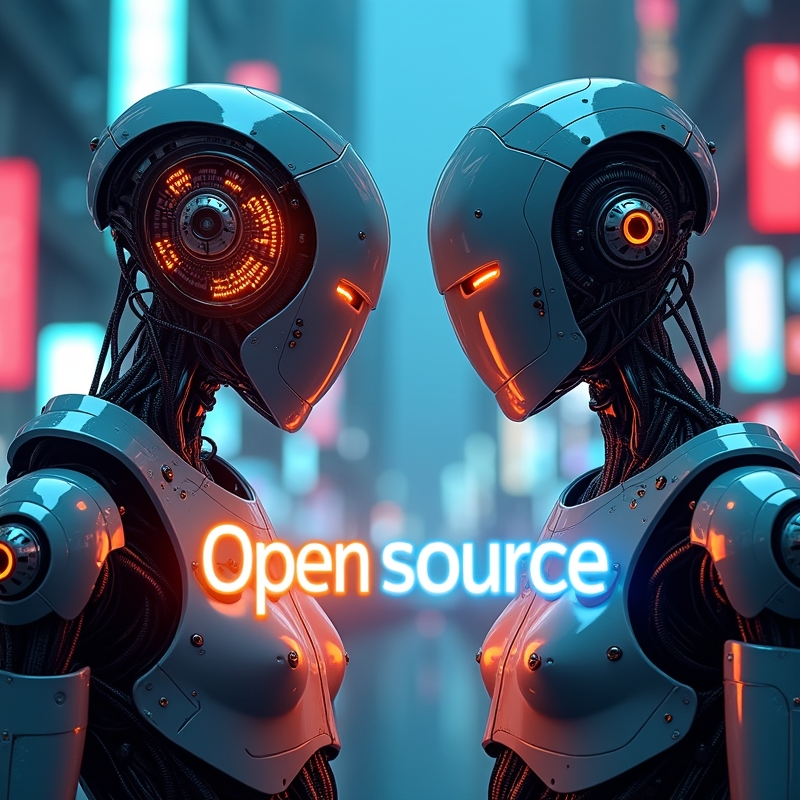In 2025, the world of artificial intelligence is like a giant toolbox with two main compartments: open-source and closed AI models. Each has its own strengths and weaknesses, and organizations need to understand these differences to make smart choices. The decision between open and closed models affects everything from costs and customization to security and innovation.
This article looks at how both types have grown, where they stand today, and what businesses should think about when choosing between community-driven open-source options and company-controlled closed models. The choice goes beyond just technology—it involves ethics, money, and how businesses operate.
Understanding the AI Toolbox
Open-source and closed AI models are like different kinds of recipes. Open-source models give you the full recipe—the ingredients, measurements, and cooking steps—so you can see exactly how it works and even change it. Closed models are more like ordering from a restaurant: you get the final dish but don’t know how it was made.
By 2025, there are also mixed approaches, like getting part of the recipe but not all. Some industries require more transparency, while others value secrecy. Knowing where a model fits on this spectrum helps businesses pick the right tool for the job.
Open-source models come from groups like Meta and Mistral AI, and they usually allow commercial use and changes. Closed models from companies like OpenAI and Google keep their technology private and offer access through paid services.
How They Perform
In 2025, open-source and closed models are closer in ability, but closed models still often do better at complex tasks because they have more resources and special data. However, open-source models have improved a lot thanks to community help and better training methods.
The big difference is customization. Open-source models let organizations tweak and adjust them for specific needs, like tailoring a suit. Closed models are more off-the-rack: they work well but can’t be changed much beyond small adjustments.
Performance isn’t just about accuracy; speed, efficiency, and how well they work in specific areas matter too. Open-source models can be optimized for certain hardware, while closed models get steady updates through the cloud.
Costs and Money
Choosing between open and closed models involves money matters. Open-source models seem free at first, but they come with hidden costs like computing power, expert staff, and maintenance. Closed models have clear subscription fees based on usage.
For big projects, open-source can save money in the long run by cutting per-use costs and avoiding reliance on one company. But you need skills and infrastructure to make it work. Closed models offer predictable pricing, which is good for businesses that want to avoid big upfront investments.
Many organizations use a mix: closed models for some tasks and open-source for others, depending on their goals and budget.
Security and Rules
Security is a big deal in 2025. Open-source models are like glass boxes: you can see inside and check for problems, which is great for sensitive data and rules. But that also means hackers can study them, and your team must handle updates and protection.
Closed models put security in the hands of the company, which can be easier but gives you less insight. Some regulations require transparency, which might make open-source a better choice even with extra work.
Innovation and Growth
Open-source models grow through community effort, with people worldwide adding ideas and improvements. It’s like a group project where everyone contributes. Closed models innovate with focused company teams, which can be efficient but less diverse.
Your choice affects how you innovate. Open-source lets you experiment deeply, while closed models give you advanced tech without needing deep expertise.
Who Uses What
Different industries pick different models. Tech companies and researchers often choose open-source for control and flexibility. Businesses in finance or healthcare might start with closed models for simplicity and support, then add open-source later for special needs.
Startups vary: those focused on AI innovation go open-source to stay independent, while others use closed models for reliability.
What’s Next
Both types keep improving. Open-source models are catching up in performance, and closed models are offering more options like on-site use to address privacy concerns. Rules are pushing open-source to be safer and closed models to be more transparent.
In the future, the line between open and closed might blur, with hybrids becoming common. Organizations will likely use both, picking the best tool for each job.
Making the Choice
Deciding between open and closed models requires thinking about your skills, resources, goals, and risks. Consider how much customization you need, how sensitive your data is, and what you can handle technically.
A mixed approach often works best, using closed models for some things and open-source for others. Keep reviewing your choice as technology changes to stay flexible.
This decision is key for businesses embracing AI. Neither open nor closed is always better—each has its place. Successful organizations will use both wisely, focusing on how to implement AI effectively and ethically to meet their goals.

发表回复